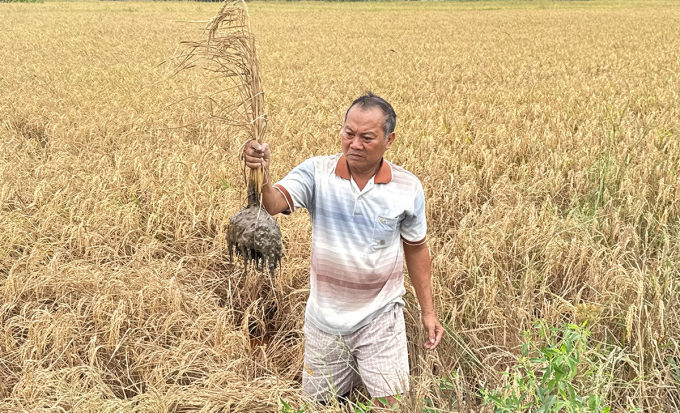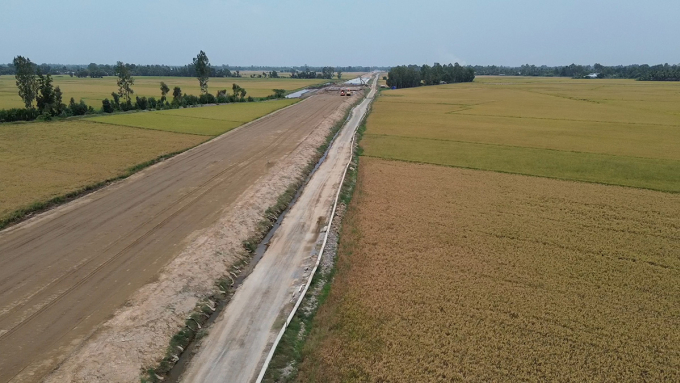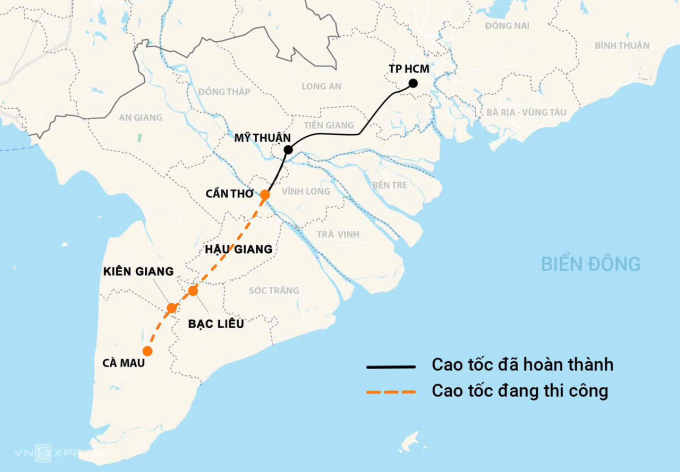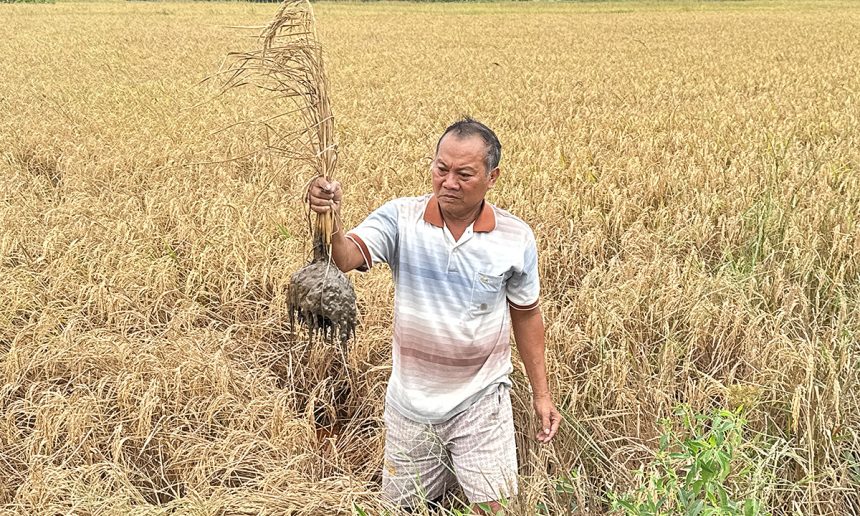Hau GiangThe Deputy Prime Minister has just asked the Ministry of Construction to soon overcome the saline water leaks from the highway affecting rice and contractors to compensate for damage to the people.
The proposal of Deputy Prime Minister Tran Hong Ha came after the Ministry of Agriculture and Environment reported the rice situation of the people of Luong Nghia commune, Long My district, Hau Giang, planted next to the Can Tho – Ca Mau highway to die and damage.

Mr. Tran was smart on the family’s field with many dead rice. Image: An Binh
The Deputy Prime Minister requested the Ministry of Construction to implement solutions to overcome saline water leaked from the highway and from the use of saline sand to build highways affecting people’s rice and crops. This agency should direct local coordinating contractors to urgently review, statistic and compensate for people as prescribed.
The Ministry of Agriculture and Environment needs to direct the local authorities to guide people to implement saline washing measures, ensuring the area of damage early to cultivate again. The People’s Committee of Hau Giang Province directed the authorities to review the statistics of rice and crops affected, damage and coordinate with the contractor’s joint venture to urgently compensate for damage to the people.
In 2-3, more than 21 hectares of winter -spring rice planted on both sides of Can Tho – Ca Mau (under construction) section passing Luong Nghia commune, Long My district, rooted and damaged, many areas were lost.

The rice fields of the people of Luong Nghia commune next to the Can Tho – Ca Mau highway died in March.
Image: An Binh
People reflect that the dead rice occurs after the sand pumping highway. Because the two sides of the highway have no drainage ditches, alum and salt water overflow, absorbed into the field. The People’s Committee of Luong Nghia commune recorded more than 21 hectares of rice from 49 households in three hamlets suffering from 20-100%, due to the effects of alum and salty water from the sand pump through the area through the area.
Local functional branches check and measure salinity on rice fields planted on both sides of the highway. The salinity results in this area are 7-11 per thousand, while the rice only lives when the soil has salinity from 2 thousand or less.
During the working process, the contractor affirmed that the project through this area uses river sand. However, the time when the barges brought sand to gather in the river in the locality, the river water was saline (from January 1 every year). When taking water from this river into the sand barge to dilute the sand and then pump into the highway construction site (more than one km), the salt water and alum in the rusted sand into the people’s rice fields.
On the morning of April 23, Mr. Ho Minh Duong, Director of the Executive Board of Trung Nam Company (the construction unit of the high -speed bidding package through Long My district), said that it was coordinating the parties to organize compensation for the damaged people, expected to be completed next week.

Direction of Can Tho – Ca Mau highway. Graphic: Hoang Chuong
The highway project runs along the West nearly 111 km long, passing through Can Tho, Hau Giang, Kien Giang, Bac Lieu and Ca Mau. This is the last highway to help connect from Ho Chi Minh City to Ca Mau. The project has a total investment of more than VND 27,500 billion, started in early 2023, up to now more than 66%. The contractor is promoting construction to bring the project to use by the end of this year.
An Binh



